Table of Contents
Introduction
The skyline in Indian cities has shifted significantly over the previous 20 years, because of the construction and expansion in metro cities. Cities like Mumbai, that were dominated by low-rise residential compounds, are now scattered by the poshest skyscrapers with some of the plushest people in the country living. According to a rough estimate, Mumbai alone accounts for over 50 skyscrapers, followed by 12 in Kolkata.
While several skyscrapers are currently under construction, here is a list of the tallest buildings in India, which are already operational and habitable. There are a variety of skyscraper typologies in India, ranging from residential to commercial.
High-rise buildings or skyscrapers are tall enough that they require a system of mechanical vertical transportation, such as elevators. The skyscraper is a very tall high-rise building built with a specific intention in mind. High-rise builds have largely helped with reducing housing costs, leveling inequality, and allowing more people to live in city centers are three of the founding reasons skyscrapers were built.
History
The earliest high-rise structures were constructed in the United States in the 1880s. They mostly arose in urban areas because of severe increases in land prices and great population densities, hence creating a necessity for buildings that rose vertically rather than spread horizontally, saving the limited and expensive asset: land.

The world’s first skyscraper was the Home Insurance Building in Chicago, constructed in 1884-1885. The Home Insurance Building in Chicago is also known as the “Father of the Skyscraper” surpassed all of 10 stories with its peak at 138 feet, which is a miniature considering today’s standards but was believed massive at that time.
The architect, Major William LeBaron Jenney, integrated a steel frame that supported the walls and the immense weight of the entire building, and the exterior was made of brick. The Home Insurance Building construction technique was spawned as a new type of construction described as the “Chicago Skeleton.”
10 Tallest buildings in India
Tallest Building: World One
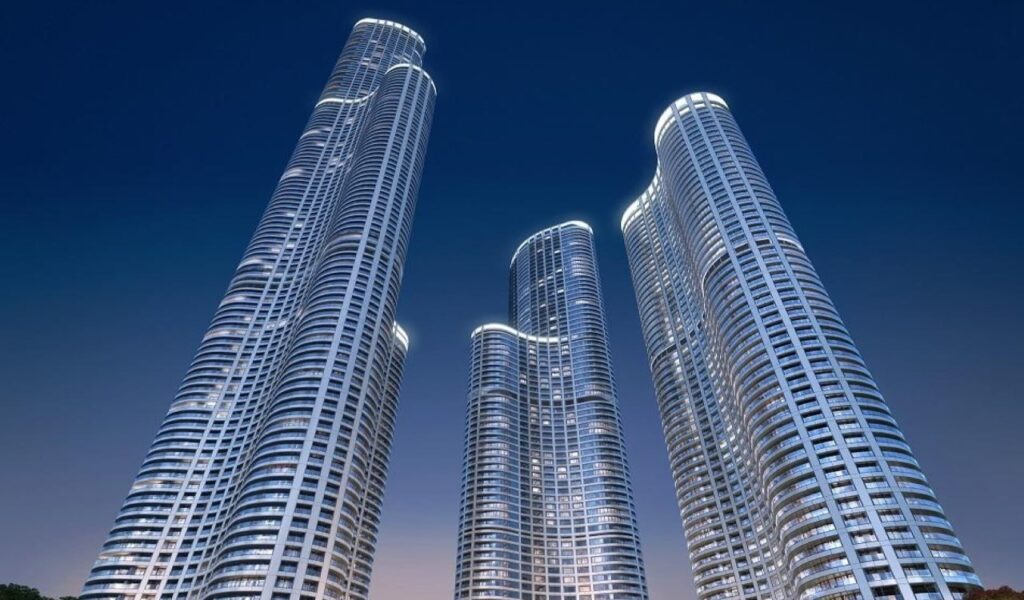
World One, developed by Lodha Group, is the tallest building in Mumbai and in India. World One is built on the 7.1-hectare site of the obsolete Shrinivas Mill. The site also lives two additional lower towers. The initial idea was to build this tower at 442 meters tall, but because of a lack of permission from the Airports Authority of India (AAI), the tower was revamped to its existing height, making it the tallest skyscraper in India.
World View
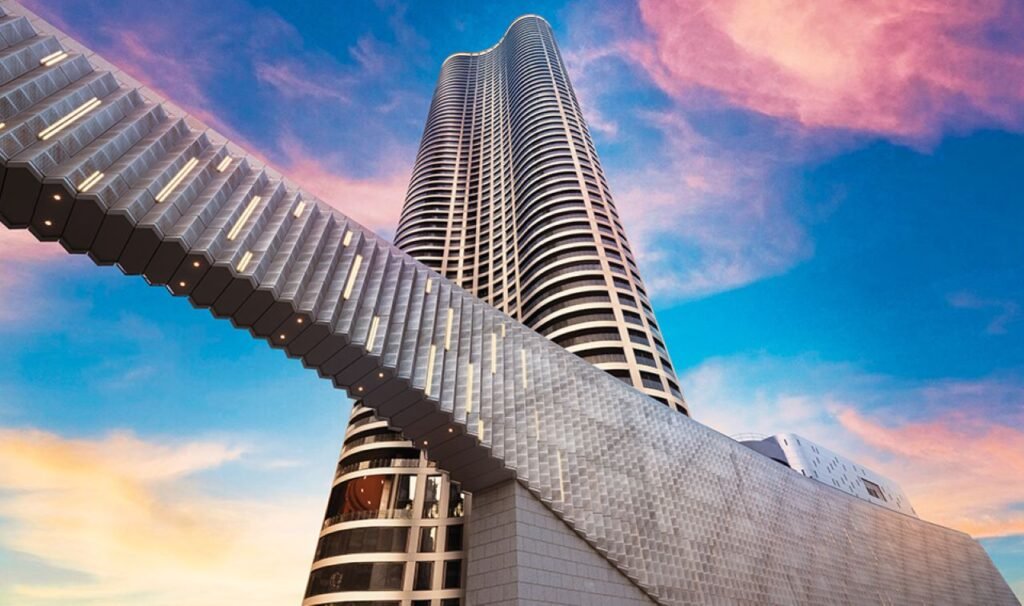
World View is in the same building complex as World One. World View comprises 73 floors, this is the second-tallest tower in India with a height of 277.5 meters. The construction started in 2015 and took five years to complete and is in the Lower Parel area. World View complex is a very notable landmark in the area. The World View also forms the center of the World Towers trinity. World View is skirted by World Crest and World One on either side, making World View the focus of the elevated podium landscape.
Lodha The Park 1

The Park is a luxury residential project, built over an area of 17.5 acres, developed by the Lodha Group with an astonishing height of 268 meters. The project became an enormous triumph as several celebrities purchased properties there, including superstar Aishwarya Rai Bachchan, who bought a 4BHK home here. This tallest tower in India has 78 floors and offers uber-luxury apartments only to selected people.
Nathani Heights- Skyscrapers in Mumbai

Nathani Heights is a 3BHK & 4BHK luxurious apartment, geared up with all the modern amenities spread over approximately 75000 sq. ft carpet area. Nathani Heights provides of endless view of Arabian Sea, Mahalaxmi Racecourse & Queen’s Necklace. Nathani Heights is centrally located that enables effortless and swift commutation in and around South Mumbai. Nathani Heights construction began in 2012. It took around eight years to complete this tower. There are 72 floors in this highest floor building in India with a total height of 262 meters, which is in one of the busiest and crowded areas of Mumbai.
The Imperial I Mumbai
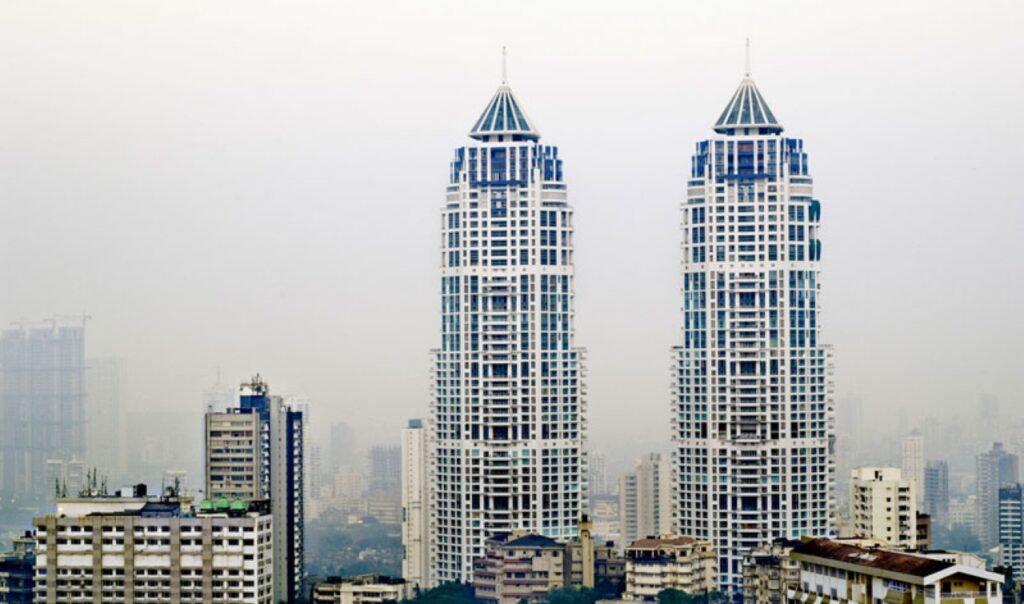
The Imperial II Mumbai

Imperial 1 and 2 is a modernist inspired twin-tower with ultra-luxurious amenities and the residential skyscraper complex is in the billionaires’ row of Mumbai, India. Imperial 1 and 2 have been home to several high-net-worth individuals. Imperial 1 and 2 were the tallest skyscraper in India from 2010 to 2019, with a height of 262 meters, when it was overtaken by Lodha. The Park’s height was surpassed by World One within a year.
The 42, Kolkata
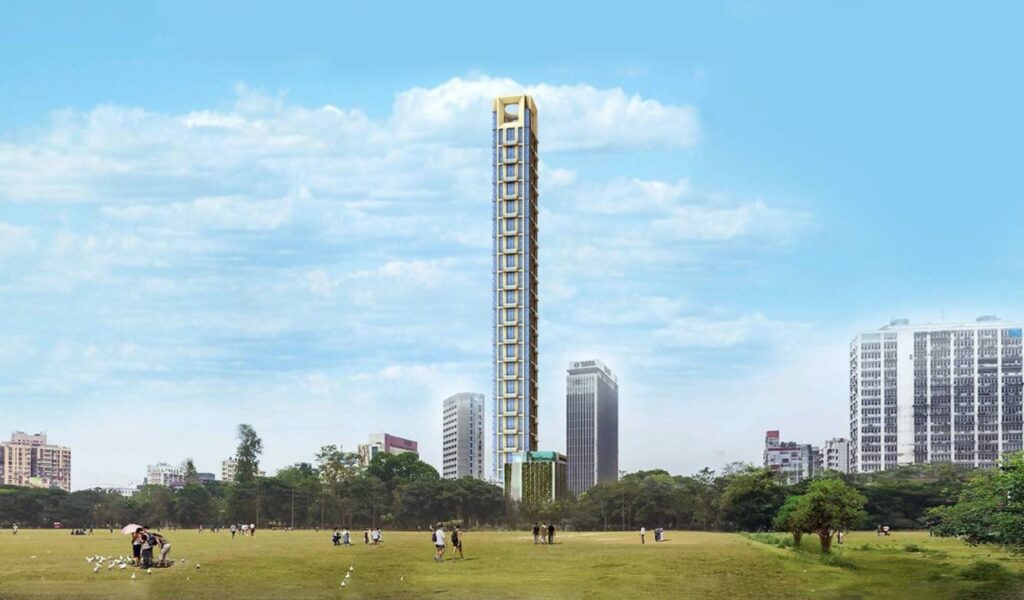
The 42 is East India’s tallest tower, in Kolkata. The 42 is a residential skyscraper, standing in Chowringhee, the fundamental business district of the city. Construction of the 42 with 65-floor building in India was finished in 2019 is standing tall at 249 meters.
Ahuja Tower- Skyscrapers in Mumbai

Ahuja Towers is another residential project in Mumbai’s Prabhadevi, known for housing several celebrities, including Rohit Sharma’s home, the star of the Indian cricket team. Ahuja Towers tower was completed in 2019 and has 55 floors, with a great height of 248 meters and is built by Ahuja Constructions. This is one of the premium projects in the vicinity.
One Avighna Park

The One Avighna Park project is in the Lower Parel and has 61 floors with a height of 247 meters. This is also a twin-tower structure established by Avighna India Ltd. The project was completed in 2019 and has 3, 4, and 5BHK apartments that are only offered to only a few selected individuals. One Avighna Park also has a pre-certified Platinum Rating awarded by the Indian Green Building Council (IGBC).
Crescent Bay Tower 6
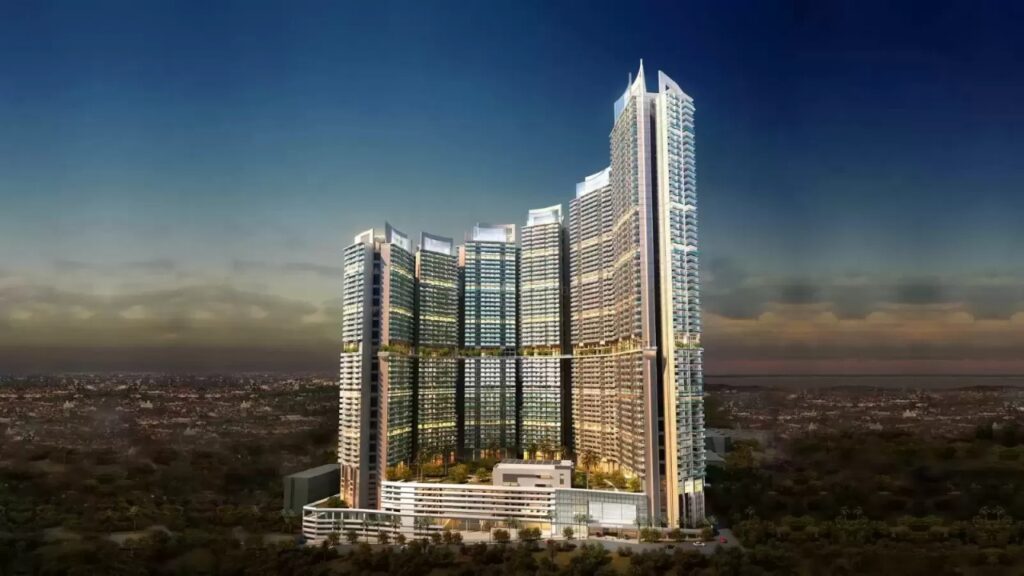
Crescent Bay is an uber-premium project developed by L&T Realty in partnership with Omkar. This gated complex in Parel comprises six different residential towers. Tower Six is the tallest with 62 floors and great height of 239 meters.
Imperial 3- Skyscrapers in Mumbai (2025)
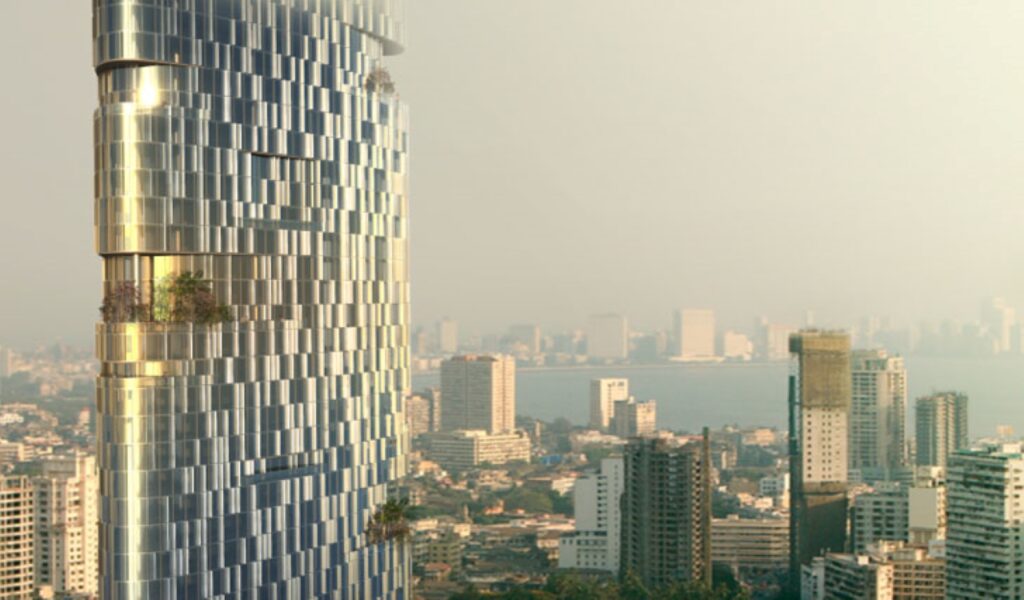
The Imperial 3 has been expected to be one of the first skyscrapers in the country to have an eco-friendly architectural design which shall lead to the accomplishment of the LEED Platinum grade by the Green Building Council for environmental sustainability. The Imperial 3 is assumed to be architecturally attractive; this building is capable of preventing excess heat penetration and a system of automatic daylight dimming. In addition, the Imperial 3 shall say to have sky gardens to endure the wind.
The Imperial 3 is said to have several distinctive characteristics that will help in reducing environmental harm for the specific purpose the Imperial 3 would have insulated glazing installed from top to bottom. The construction of the ginormous Imperial 3 is in process since the year 2016 and is expected to reach completion in 2025. Imperial 3 is going to be one of the highest “green” buildings in India.
India Tower
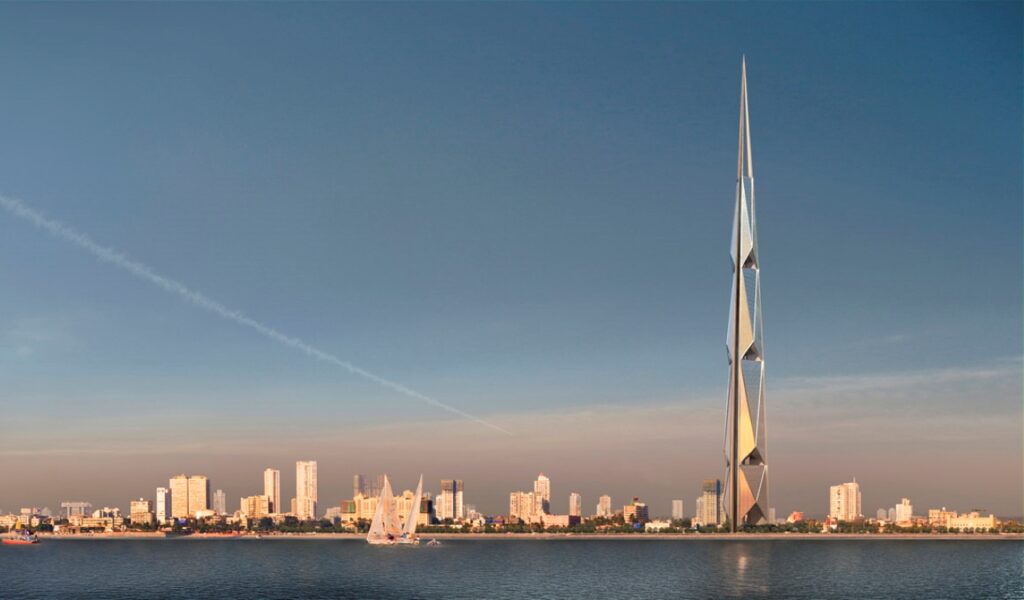
India Tower, previously known as the Park Hyatt Tower or the Dynamix Balwas Tower, or DB Tower is a rescinded 126-story, 707.5 meters mega tall skyscraper that began construction in 2010 in the metropolitan city, Mumbai, India.
Mumbai lies within the equatorial belt, south of the Tropic of Cancer, as a result, has a hot, humid climate nearly all year round. The India Tower is anticipated to integrate the prosperity of sustainable features, such as water management systems, climate-responsive cladding, and onsite renewable energy generation systems. The India tower is said to have a target to achieve the LEED Platinum.
The tower was originally planned to be entirely completed in 2016, but assembly work was put on hold in 2011 because of a disagreement between the tower’s developers and Mumbai’s civic authorities.
Future of Skyscrapers in India
India is on a spree of constantly developing and has become a home to a plethora of other supertall skyscrapers other than the buildings that have been mentioned in the list of tallest buildings in India. India is developing at an immense rate and at one point or the other all the above mentioned have been topped out structurally by other, more ambitious projects that are at present are standing tall or are work in progress.

Skyscrapers will be new coming due for many reasons. First, because of scarcity of land and the limited amount it is present in and with a growing population, it will only make it difficult to spread more on the ground.
Second, it becomes very easy to accommodate many things in the same vicinity and helps in saving a lot with such a busy lifestyle, especially in metropolitan cities like Mumbai. Third, these buildings look magnificent and attract a lot of grace.
Conclusion
Numerous developed countries during the period of initial urbanization were hit with an unprecedented boom in tall buildings along with the world’s first steel skyscraper. In 2004, Manhattan, also known as the queen of the concrete jungle during the time, lived up to 28 skyscrapers scaling 215 meters or taller. In the 14 years since an additional 13 superstructures have been built and a further 15 are under construction.
Throughout industrial history, the most unforgettable structures have been constructed of powerful construction steel, defying gravity, with its highest point seeming to reach the clouds. As trends in architecture translate, “grandeur” won’t be the only aim that the designers wish to achieve. The trend of tall buildings all over the world might soon size to exist as innovators will be vying for the most efficient and sustainable structures.
In contrast, an in-depth study that was commissioned by Samsung in 2016 demonstrated a vivid picture of the earth’s cities 100 years from now with “hyper-tall skyscrapers, underwater bubble cities, personal home medical pods, and civilian colonies on the Moon.”




